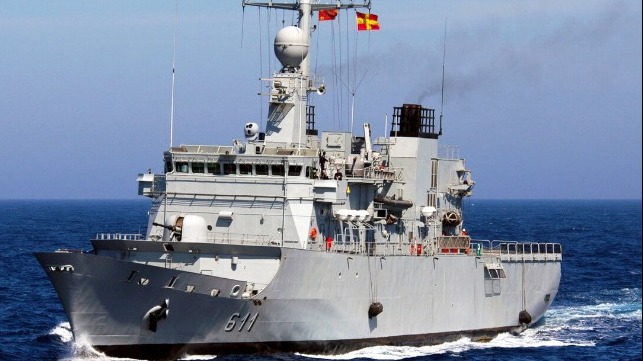India and France Conduct Joint Surveillance in Indian Ocean

India and France are increasing their collaboration in the Indian Ocean aimed at increasing maritime safety in the region. The two countries recently conducted their latest joint surveillance and mapping of the South-West Indian Ocean.
The latest mission was focusing on the waters of the Mozambique Channel, as well as in the areas around Mauritius and Reunion. The Indian Navy’s Boeing P-8l arrived in Reunion, a French Overseas territory in the Indian Ocean, on November 8. It teamed up with the French Navy Falcon 50 maritime aircraft for the surveillance.
This year has seen an increase in joint exercises between the French and Indian navies, with the first mission happening in March 2022. Another joint surveillance exercise followed in May 2022, involving an Indian P-8l aircraft along with the French frigates Floreal and Nivose.
According to the Indian Navy, the joint surveillance exercises go beyond ocean bed mapping, with the strategic allies committed to combat piracy, drug trafficking, arms smuggling, and the presence of extraneous powers on the eastern seaboard of Africa as part of maritime security cooperation.
“This deployment will further enhance maritime domain awareness, security, and safety in the Southern Indian Ocean Region (IOR),” stated the Indian Navy.
One of the cornerstones of India’s Indo-Pacific Strategic in the recent past has been on consolidation of strategic partnerships in the Indian Ocean region.
While India is a member of the Quadrilateral Security Dialogue (QUAD) consisting of Australia, Japan, and the U.S., its naval initiatives with France have been more prominent. The QUAD alliance was revived in 2017 to counter China militarily and diplomatically in the Indo-Pacific, particularly in the South China Sea.
In addition, India also participated in a maiden naval exercise together with Mozambique and Tanzania from October 27 to 29. The exercise aimed at capability development to address common threats in the Indian Ocean and sharing best practices.
The surveillance efforts by India and France in the Indian Ocean came at a time India’s Strategic Forces Command was forced last week to suspend a ballistic missile test, owing to the presence of a Chinese research vessel in the Indian Ocean region.
Earlier, India had issued a NOTAM (Notice to Airmen) with an expanded no-fly zone over the Bay of Bengal for the test of a long-range ballistic missile on November 10-11. This was canceled on November 7 with the launch window pushed to November 23-24.
China’s Yuan Wang-6, an advanced missile and satellite-tracking vessel is said to be operating within the Indian Ocean. Early this month, it was located sailing off the Bali coast in Indonesia. The Indian Navy said it was monitoring the movements of the Chinese research vessel to ensure it does not track its missile launches.
In August, another Chinese research vessel Yuan Wang 5, docked at Sri Lanka’s Hambantota Port on what the Chinese called a “replenishment visit.” However, some western defense analysts believe the vessel was on a spy mission to track and listen in on satellites.
China has recently increased its interest in the Indian Ocean, demonstrated by the increased frequency of Chinese research vessels in the Indian Ocean. Analysts point to the vital role the Indian Ocean plays in strategic maritime trade routes that supply the world with energy and other critical commodities.
